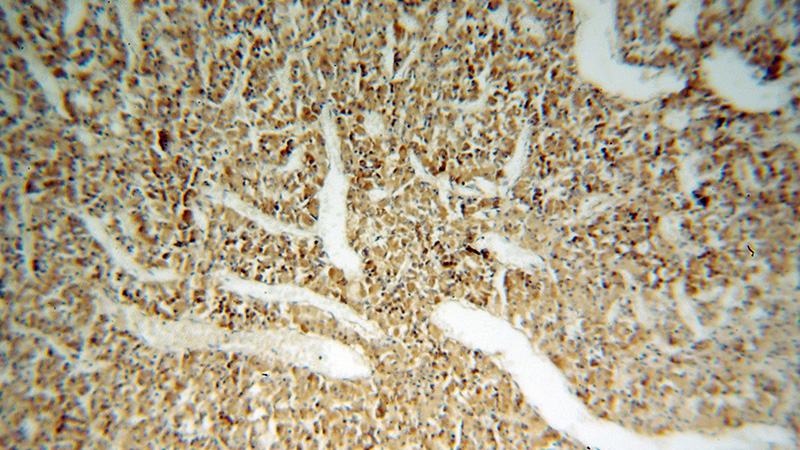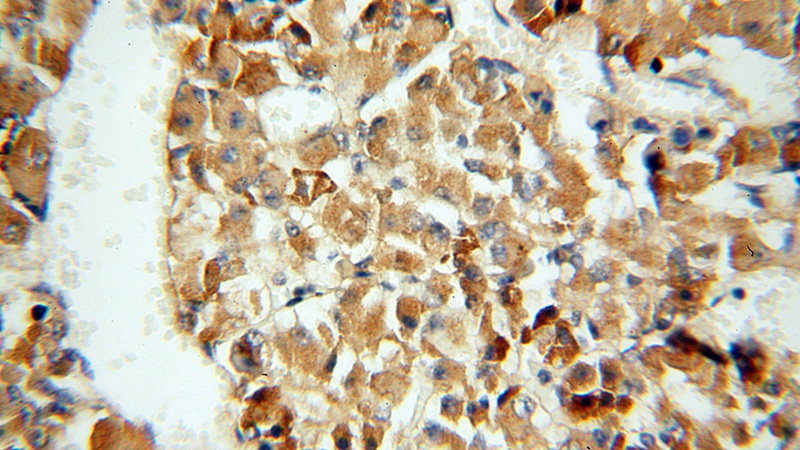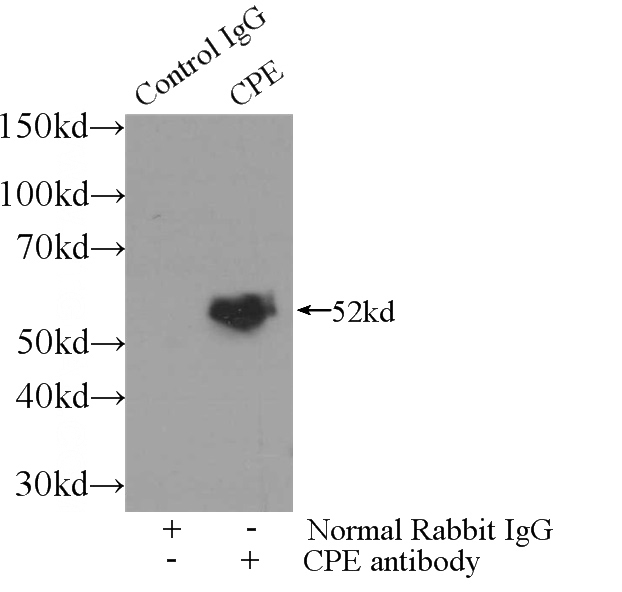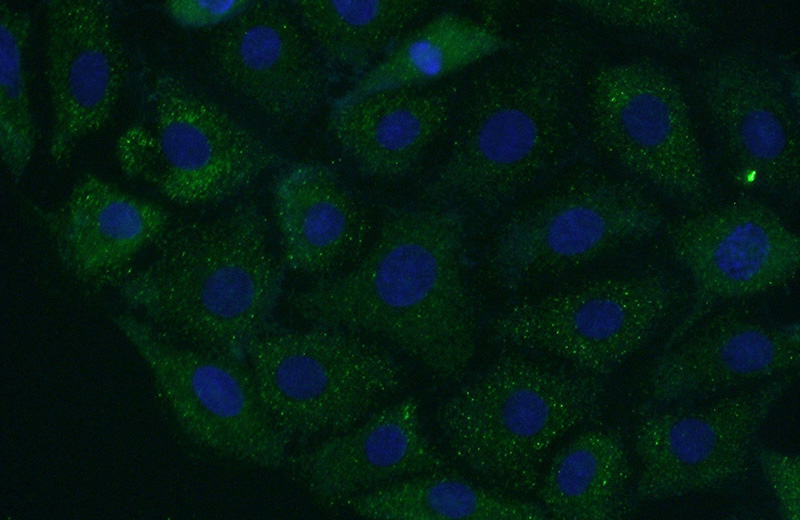-
Product Name
Carboxypeptidase E antibody
- Documents
-
Description
Carboxypeptidase E Rabbit Polyclonal antibody. Positive WB detected in mouse brain tissue, human brain tissue, rat brain tissue. Positive IP detected in mouse brain tissue. Positive IF detected in SH-SY5Y cells. Positive IHC detected in human pituitary tissue. Observed molecular weight by Western-blot: 50kDa, 52 kDa
-
Tested applications
ELISA, WB, IHC, IP, IF
-
Species reactivity
Human, Mouse, Rat; other species not tested.
-
Alternative names
Carboxypeptidase E antibody; Carboxypeptidase H antibody; CPE antibody; CPH antibody; Enkephalin convertase antibody
-
Isotype
Rabbit IgG
-
Preparation
This antibody was obtained by immunization of Carboxypeptidase E recombinant protein (Accession Number: NM_001873). Purification method: Antigen affinity purified.
-
Clonality
Polyclonal
-
Formulation
PBS with 0.02% sodium azide and 50% glycerol pH 7.3.
-
Storage instructions
Store at -20℃. DO NOT ALIQUOT
-
Applications
Recommended Dilution:
WB: 1:200-1:2000
IP: 1:200-1:2000
IHC: 1:20-1:200
IF: 1:50-1:500
-
Validations

mouse brain tissue were subjected to SDS PAGE followed by western blot with Catalog No:108852(CPE antibody) at dilution of 1:600

Immunohistochemical of paraffin-embedded human pituitary using Catalog No:108852(CPE antibody) at dilution of 1:50 (under 10x lens)

Immunohistochemical of paraffin-embedded human pituitary using Catalog No:108852(CPE antibody) at dilution of 1:50 (under 40x lens)

IP Result of anti-CPE (IP:Catalog No:108852, 3ug; Detection:Catalog No:108852 1:500) with mouse brain tissue lysate 3500ug.

Immunofluorescent analysis of (-20oc Acetone) fixed SH-SY5Y cells using Catalog No:108852(CPE Antibody) at dilution of 1:50 and Alexa Fluor 488-congugated AffiniPure Goat Anti-Rabbit IgG(H+L)
-
Background
CPE(Carboxypeptidase E) is also named as CPH.It belongs to the peptidase M14 family and is involved in the biosynthesis of peptide hormones and neurotransmitters, including insulin.The deduced 476-amino acid human protein contains an N-terminal signal peptide, followed by a 'pro' sequence, a polyarginine stretch, and 2 potential N-glycosylation sites.
-
References
- Plá V, Paco S, Ghezali G. Secretory sorting receptors carboxypeptidase E and secretogranin III in amyloid β-associated neural degeneration in Alzheimer's disease. Brain pathology (Zurich, Switzerland). 23(3):274-84. 2013.
Related Products / Services
Please note: All products are "FOR RESEARCH USE ONLY AND ARE NOT INTENDED FOR DIAGNOSTIC OR THERAPEUTIC USE"
